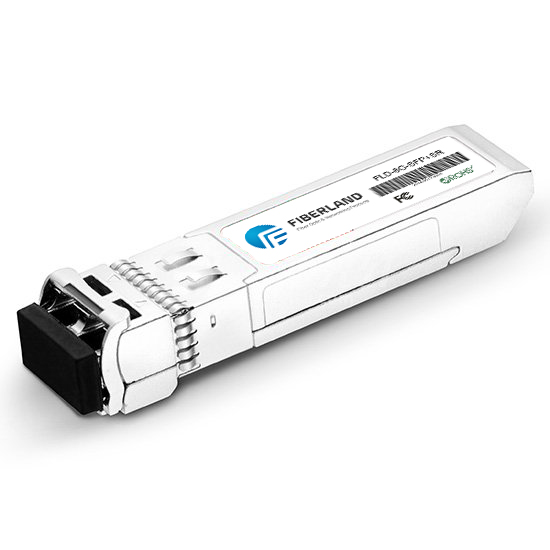Optical transceiver VS media converter
2017-08-25
https://www.fiberlandtec.com/media-converters/In the optical communications field, many devices have similar functions, such as optical transceivers and media converter, they are the equipment for photoelectric conversion. Do you know their differences?Let’s learn about this.

What is media converter?
Optical media converter is a medium for converting short distance electrical signals and long distance optical signals. It is also called photoelectric converter in many places and is generally used in long distance transmission. Optical transceiver is a cost-effective solution, it does not require a lot of manpower, material resources and time to complete the network upgrade.
What is optical transceiver?
The optical module consists of optoelectronic devices, functional circuits and optical interfaces, optoelectronic devices include transmitting and receiving. Simply speaking, the function of an optical module is photoelectric conversion. The transmitter converts an electrical signal into an optical signal and the receiving end converts the optical signal into an electrical signal after transmitting through an optical fiber. The principle is the same as the media converter, but it is more efficient and safer than the media converter.
According to the definition of optical module, as long as there is optical signal, there will be the application of optical module.
How can the optical module be used in conjunction with the media converter?
The wavelength and transmission distance must be the same, for example, using 1310nm wavelength, the transmission distance should be 10KM/20KM.
Optical fiber pigtail interface selection should be paid attention, used in generally media converter uses SC port, optical module uses LC port.
The data rate must be the same, Gigabit media converter corresponding to 1.25G optical module, megabit connect megabit, gigabit connect gigabit.
The optical module types must be the same.
SFP+ module,SFP+ transceiver,bidi sfp,XFP module,XFP transceiver Which is good? First choice Fiberland!Thanks for your concern, to learn more about Fiberland, please enter Fiberland website: http://www.fiberlandtec.com/

What is media converter?
Optical media converter is a medium for converting short distance electrical signals and long distance optical signals. It is also called photoelectric converter in many places and is generally used in long distance transmission. Optical transceiver is a cost-effective solution, it does not require a lot of manpower, material resources and time to complete the network upgrade.
What is optical transceiver?
The optical module consists of optoelectronic devices, functional circuits and optical interfaces, optoelectronic devices include transmitting and receiving. Simply speaking, the function of an optical module is photoelectric conversion. The transmitter converts an electrical signal into an optical signal and the receiving end converts the optical signal into an electrical signal after transmitting through an optical fiber. The principle is the same as the media converter, but it is more efficient and safer than the media converter.
According to the definition of optical module, as long as there is optical signal, there will be the application of optical module.
How can the optical module be used in conjunction with the media converter?
The wavelength and transmission distance must be the same, for example, using 1310nm wavelength, the transmission distance should be 10KM/20KM.
Optical fiber pigtail interface selection should be paid attention, used in generally media converter uses SC port, optical module uses LC port.
The data rate must be the same, Gigabit media converter corresponding to 1.25G optical module, megabit connect megabit, gigabit connect gigabit.
The optical module types must be the same.
SFP+ module,SFP+ transceiver,bidi sfp,XFP module,XFP transceiver Which is good? First choice Fiberland!Thanks for your concern, to learn more about Fiberland, please enter Fiberland website: http://www.fiberlandtec.com/
RECENT BLOG POST
-
012019-10With the continuous development of 5G communication technology, 100G modules are gradually becoming popular. We know that there are many kinds of packages for 100G optical modules. From 2000 to now, the optical module package types have been rapidly developed. Its main package types are: GBIC, SFP, XENPAK, SNAP12, X2, XFP, SFP+, QSFP/QSFP+, CFP, CXP. In the fast-developing network era, some 100G optical modules avoid the risk of being eliminated, and upgraded and revised with the wave of the Internet, such as 100G CFP optical modules.
-
012019-101. What is the CWDM SFP? The CWDM optical module is an optical module using CWDM technology to implement the connection between the existing network device and the CWDM multiplexer/demultiplexer. When used with a CWDM multiplexer/demultiplexer, CWDM optical modules can increase network capacity by transmitting multiple data channels with separate optical wavelengths (1270 nm to 1610 nm) on the same single fiber.
-
012019-10AOC is the abbreviation of Active Optical Cables, which is called Active Optical Cables in Chinese. AOC active optical is to encapsulate two optical modules and cable together. Because the medium of transmission in the middle is optical cable, AOC optical module, which contains laser devices, has a higher price for DAC. However, its optical aperture is not exposed, it has high reliability, and its working distance can be customized for a long distance of less than 100 meters.
-
012019-10Dense Wavelength Division Multiplexing (DWDM) technology is capable of transmitting data in an optical fiber using bit wavelength parallel transmission or string line transmission using the wavelength of the laser.It is widely used in different fields of communication networks, including long-distance backbone networks, metropolitan area networks (MANs), residential access networks, and local area networks (LANs).The DWDM optical module is the optical module that uses this technology, so the DWDM optical module has high bandwidth and long-distance transmission characteristics.












